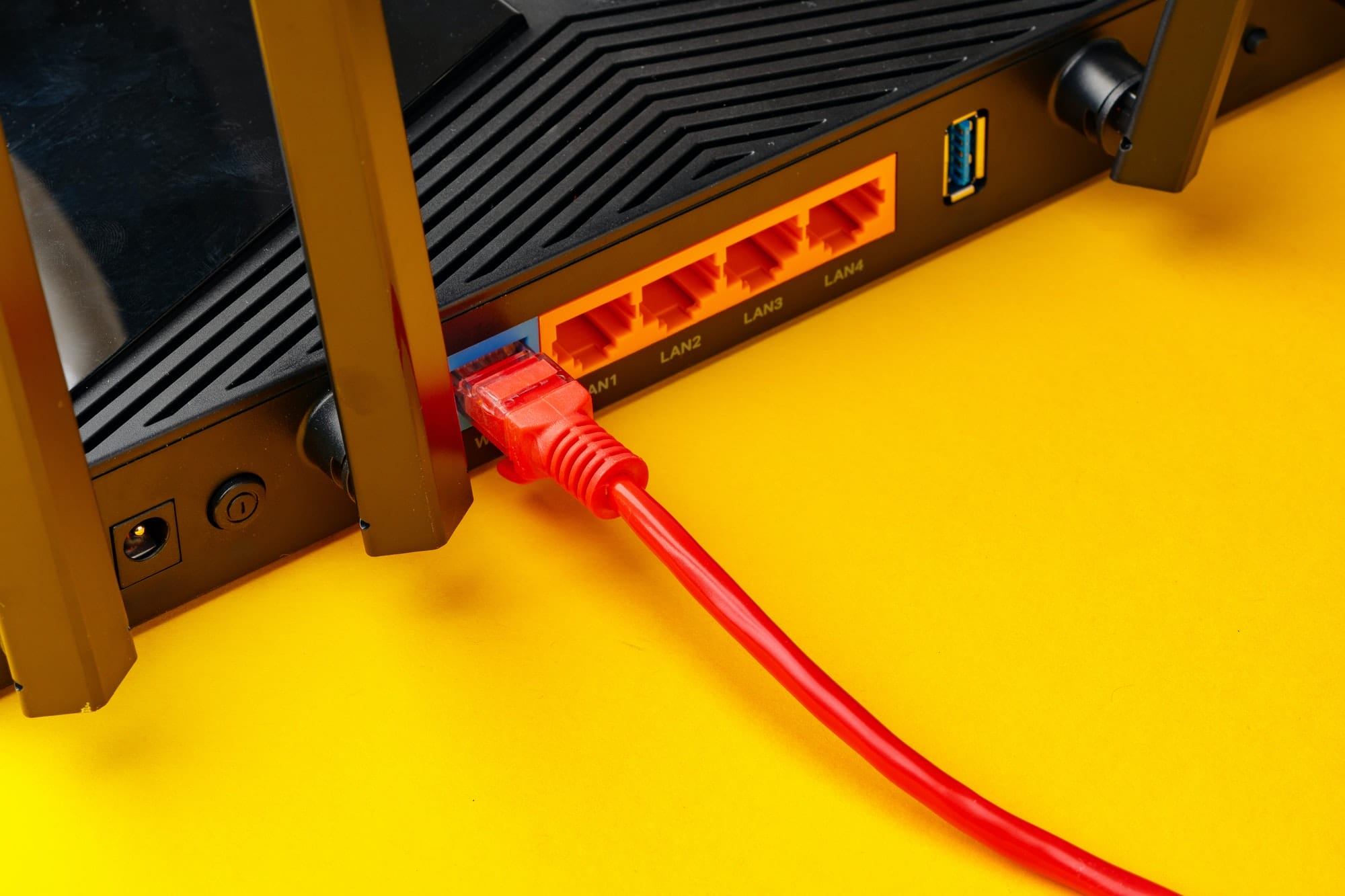
Are you tired of slow and unreliable internet at home? Do you struggle with dead zones and poor coverage? Look no further, as mesh networks are here to revolutionize your home internet experience. In this article, we will explore the concept of mesh networks and how they can solve common internet connectivity issues for you. Get ready to say goodbye to frustrating Wi-Fi problems.
What Is a Mesh Network?
A mesh network is a wireless network that enables direct communication between each device within the network. This results in a web of connections that can effectively cover a larger area and provide more reliable internet coverage than traditional Wi-Fi extenders.
The idea of mesh networks dates back to the 1980s, when the U.S. military utilized it to establish strong and resilient communication networks. Over the years, mesh networks have advanced and are now transforming the way home internet coverage is achieved.
How Does a Mesh Network Work?
- How Does a Mesh Network Work? A mesh network operates through multiple interlinked Wi-Fi nodes communicating with each other.
- Nodes extend wireless coverage, creating a unified network with seamless roaming.
- Each node acts as a transmitter, receiver, and relay, enhancing signal strength and eliminating dead zones.
- Devices automatically connect to the strongest node, optimizing performance and internet speed.
What Is the Role of a Node in a Mesh Network?
In a mesh network, a node plays a crucial role as a connection point that facilitates the transmission of data between other devices within the network. Each node acts as a communication relay, improving the network’s coverage and resilience. By working together, the interconnected nodes ensure efficient data transmission, ultimately enhancing the network’s self-healing capability.
How Do Nodes Communicate in a Mesh Network?
- In a mesh network, nodes communicate through a process known as multi-hop relay, where data is transmitted from one node to another until it reaches its intended destination.
- Each node serves as a router, allowing for data to be forwarded to and from other nodes, creating multiple communication paths.
- Nodes also possess self-configuring capabilities, allowing them to adapt to changes within the network and optimize data transmission.

What Are the Benefits of Using a Mesh Network?
In today’s fast-paced world, reliable and seamless internet connectivity is essential. This is where mesh networks come in, revolutionizing the way we access the internet at home. But what exactly are the benefits of using a mesh network? In this section, we’ll delve into the three main advantages: improved coverage and connectivity, easy set-up and management, and enhanced security and privacy. By the end, you’ll have a better understanding of why mesh networks are becoming increasingly popular for home internet coverage.
1. Improved Coverage and Connectivity
- Placement: Strategically positioning nodes ensures optimal coverage and improved connectivity.
- Distance: Placing nodes within the recommended distance to each other maintains strong connections and enhances coverage.
- Obstacles: Identifying and eliminating obstacles that may hinder signal propagation improves coverage and connectivity.
2. Easy Set-up and Management
- Position Nodes: Strategically place nodes to ensure optimal coverage and connectivity for easy set-up and management.
- Connect Nodes: Follow manufacturer instructions to connect nodes to the network for easy set-up and management.
- Configure Network: Use the provided software or app to configure the mesh network settings for easy set-up and management.
- Monitor Performance: Regularly monitor network performance and make adjustments as needed for easy set-up and management.
3. Enhanced Security and Privacy
- Encrypted Communication: Mesh networks utilize encryption to ensure enhanced security and privacy during data transmission.
- Decentralized Architecture: By distributing data processing and storage across nodes, mesh networks enhance security and privacy, reducing the risk of centralized vulnerabilities.
- Authentication Mechanisms: Implementing robust authentication methods within mesh networks strengthens security and privacy, protecting against unauthorized access and data breaches.

What Are the Different Types of Mesh Networks?
Mesh networks have been gaining popularity as a revolutionary solution for expanding home internet coverage. But did you know that there are different types of mesh networks? In this section, we will discuss the three main types: full mesh, partial mesh, and hybrid mesh networks. Each type has its own unique characteristics and benefits, so let’s dive in and explore what sets them apart.
1. Full Mesh Network
A full mesh network is defined by the interconnection of every node, which promotes redundancy and fault tolerance. In order to set up a full mesh network, follow these steps:
- Step 1: Connect each node in the network.
- Step 2: Ensure direct communication between every node.
- Step 3: Configure the network to efficiently handle traffic and manage the numerous interconnections.
When establishing a full mesh network, it is important to prioritize reliable hardware and consider its potential for scalability in the future.
2. Partial Mesh Network
A partial mesh network is a combination of a mesh and a star network. In this arrangement, most devices are interconnected, while some only connect to a few others. This setup offers a compromise between the robustness of a full mesh and the cost-effectiveness of a star network.
Suggestions: Consider implementing a partial mesh network in environments where complete connectivity is not necessary, but a certain level of redundancy and reliability is still required.
3. Hybrid Mesh Network
- Combines features of both full and partial mesh networks to create a hybrid mesh network.
- Provides robustness and flexibility for the network.
- Allows for customized network configurations to suit specific needs.

What Are the Potential Applications of Mesh Networks?
As mesh networks continue to gain popularity, it’s important to explore the potential applications of this innovative technology. In this section, we will discuss the various ways in which mesh networks can be utilized, from improving home internet coverage to revolutionizing smart home automation. Additionally, we will also touch upon the potential uses of mesh networks in industrial and commercial settings. Get ready to discover the wide range of possibilities that mesh networks have to offer.
1. Home Internet Coverage
Enhancing home internet coverage with a mesh network can be done in a few simple steps:
- Choose a mesh network system that is suitable for your home’s size and layout.
- Place the main router near your modem and strategically position satellite nodes to eliminate any dead spots.
- Follow the manufacturer’s instructions to set up and configure the mesh network.
- Regularly update the firmware to take advantage of the latest features and security improvements.
Fun Fact: A mesh network can greatly improve Wi-Fi coverage and reliability in homes of all sizes.
2. Smart Home Automation
- Evaluate your smart home automation requirements, including security, lighting, and temperature control.
- Select compatible mesh network devices for effortless integration, such as Amazon’s Echo Plus or Google Nest.
- Set up the mesh network to guarantee coverage throughout your home, utilizing the central hub and additional nodes as needed.
- Incorporate sensors and smart devices into the mesh network for complete automation.
- Consistently update and maintain the mesh network to maximize performance and ensure security.
3. Industrial and Commercial Use
- Wireless backhaul for large-scale industrial automation.
- Real-time monitoring and control in commercial buildings.
- Enhanced connectivity for IoT devices in smart factories.
Did you know that mesh networks provide seamless coverage and reliable connectivity for various industrial and commercial applications?

What Are the Challenges and Limitations of Mesh Networks?
While mesh networks have been hailed as a game-changer for home internet coverage, it is important to also consider their challenges and limitations. These factors can impact the effectiveness and accessibility of mesh networks for everyday use. In this section, we will examine the key challenges and limitations of mesh networks, including their cost, interoperability, and complexity. By gaining a comprehensive understanding of these factors, we can make informed decisions about implementing mesh networks in our homes.
1. Cost
- Initial investment: Take into account the cost of purchasing the necessary mesh network equipment.
- Scalability: Examine the cost implications of expanding the network to support more devices.
- Maintenance: Consider ongoing maintenance and potential repair costs.
Mesh networks are a cost-effective solution for extending internet coverage and improving connectivity within homes and businesses.
2. Interoperability
- Standardization: Ensure mesh network devices adhere to common communication protocols.
- Compatibility Testing: Test devices from different manufacturers to ensure seamless operation.
- Vendor Collaboration: Foster collaboration among device manufacturers to enhance compatibility and interoperability.
For seamless interoperability, prioritize standardization, thorough testing, and collaborative efforts among vendors.
3. Complexity
- Interconnectedness: Mesh networks rely on multiple nodes that communicate with each other, forming a complex web of connections.
- Self-healing capability: If one node fails, the network can autonomously reroute and maintain connectivity, adding to its complexity.
- Dynamic routing: Data can take various paths through the network, enhancing complexity while also improving efficiency and reliability.
Frequently Asked Questions
What is a mesh network?
A mesh network is a type of network where multiple devices, known as nodes, work together to provide internet coverage throughout a home or building. This creates a seamless and consistent internet connection without relying on a single router.
How does a mesh network improve home internet coverage?
Unlike traditional home networks, where a single router is responsible for providing internet coverage, a mesh network uses multiple nodes to create a strong and reliable connection. This eliminates dead zones and ensures consistent coverage throughout the entire home.
What devices are needed for a mesh network?
To set up a mesh network, you will need a mesh router and several mesh nodes. The mesh router acts as the main hub and the nodes are placed throughout the home to extend the coverage. Some mesh systems also offer additional accessories, such as range extenders or ethernet hubs.
Can I add more nodes to my mesh network?
Yes, one of the great benefits of a mesh network is its scalability. If you find that your internet coverage is still not reaching certain areas of your home, you can easily add more nodes to the network to extend the coverage. This is much simpler and more cost-effective than trying to add range extenders to a traditional network.
Are there any downsides to using a mesh network?
While mesh networks have many benefits, there are a few potential downsides to consider. One is the initial cost, as mesh systems can be more expensive than traditional routers. Additionally, some users have reported issues with compatibility and setup, so it’s important to research and choose a reputable brand.
Is a mesh network the right choice for me?
A mesh network can be a great option for those looking to improve their home internet coverage. It’s particularly useful for larger homes or buildings, or for those with multiple devices and heavy internet usage. However, it’s important to weigh the pros and cons and consider your specific needs before making a decision.


